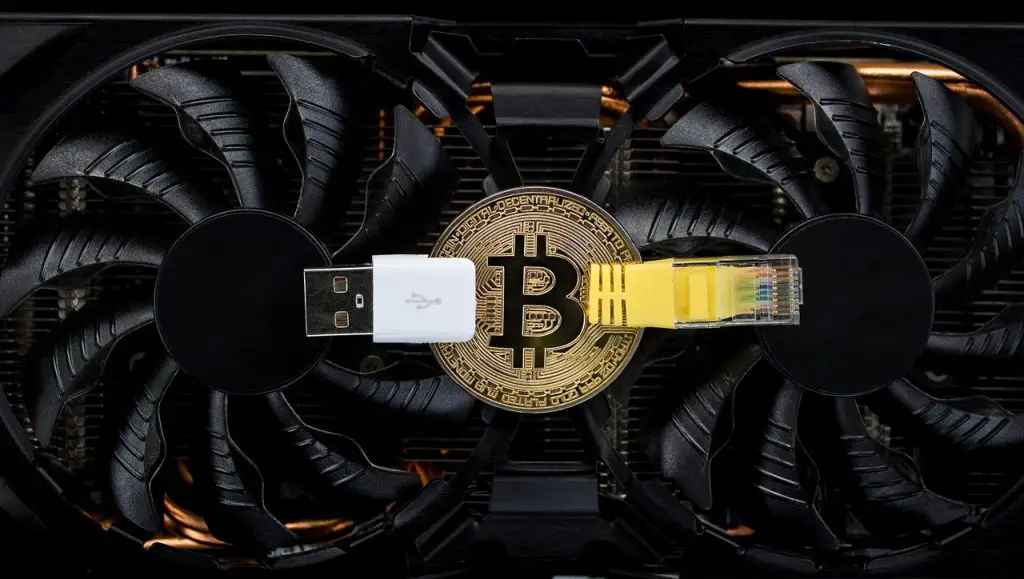Bitcoin mining is a process by which new bitcoins are created and transactions are validated. In order to mine Bitcoin, powerful computers are required, and this can be a daunting task for many people. However, with the right equipment, software, and knowledge, it is possible to mine Bitcoin at home. In this article, we will provide a step-by-step guide on how to mine Bitcoin at home.
Step 1: Understand the basics of Bitcoin mining Before starting to mine Bitcoin, it is important to understand the basics of how it works. Bitcoin mining involves solving complex mathematical problems using powerful computers. This process requires a lot of computing power and energy, as well as specialized hardware, known as Application Specific Integrated Circuits (ASICs).
Bitcoin mining is a competitive process, and miners are rewarded with bitcoins for every block they solve. The more computing power a miner has, the more chances they have of solving a block and receiving a reward.
Step 2: Determine if Bitcoin mining is profitable for you Before investing in equipment for Bitcoin mining, it is important to determine if it is profitable for you. The profitability of Bitcoin mining depends on various factors such as the price of Bitcoin, the cost of electricity, and the cost of mining equipment.
There are several online calculators available that can help you determine the profitability of Bitcoin mining based on your location and energy costs. Some of the popular calculators include WhatToMine, CryptoCompare, and CoinWarz.
It is important to note that Bitcoin mining profitability can fluctuate based on the price of Bitcoin, and mining difficulty, which adjusts every two weeks to maintain a consistent rate of block generation.
Step 3: Obtain mining hardware Once you have determined that Bitcoin mining is profitable for you, the next step is to obtain mining hardware. The most important piece of hardware for Bitcoin mining is the ASIC miner. ASICs are specifically designed for mining Bitcoin and offer
high computing power with low energy consumption. There are several reputable companies that manufacture ASICs, such as Bitmain, Canaan, and MicroBT.
When selecting an ASIC miner, it is important to consider factors such as its hash rate, energy consumption, and price. The hash rate refers to the computing power of the miner, and a higher hash rate means more chances of solving a block and receiving a reward. However, a higher hash rate also means higher energy consumption and cost.
It is also important to consider the price of the ASIC miner, as they can be quite expensive. Depending on the model and manufacturer, ASIC miners can range from a few hundred dollars to several thousand dollars.
Step 4: Choose a mining pool Bitcoin mining can be done individually or in a group known as a mining pool. In a mining pool, miners combine their computing power to increase their chances of solving a block and receiving a reward. When a block is solved, the reward is distributed among the members of the mining pool based on their contribution to the computing power.
There are several mining pools available, and it is important to choose one that is reputable and has a good track record. Some of the popular mining pools include Antpool, F2Pool, and Slushpool.
When choosing a mining pool, it is important to consider factors such as the pool’s fees, payout threshold, and payout frequency. Some mining pools charge a fee for their services, which can range from 1% to 3% of the rewards. It is also important to consider the payout threshold, which is the minimum amount of bitcoins required to be accumulated before a payout can be made. Some pools have a high payout threshold, which can delay the payment of rewards.
Step 5: Install mining software Once you have obtained the ASIC miner and chosen a mining pool, the next step is to install mining software on your computer. Mining software is used to connect your ASIC miner to the mining pool and control the mining process.
There are several mining software options available, and it is important to choose one that is compatible with your ASIC miner and operating system. Some of the popular mining software options include CGMiner, BFGMiner, and EasyMiner.
When installing mining software, it is important to follow the instructions provided by the manufacturer and ensure that the software is properly configured.
Step 6: Set up a Bitcoin wallet In order to receive the rewards from Bitcoin mining, you will need to set up a Bitcoin wallet. A Bitcoin wallet is a digital wallet used to store, send, and receive bitcoins. There are several types of Bitcoin wallets available, such as desktop wallets, mobile wallets, and hardware wallets.
It is important to choose a reputable Bitcoin wallet and follow the instructions provided to set it up. When setting up a Bitcoin wallet, you will be provided with a public key and a private key. The public key is used to receive bitcoins, while the private key is used to send bitcoins.
Step 7: Start mining Once you have completed all the previous steps, you are ready to start mining Bitcoin. To start mining, simply connect your ASIC miner to your computer and launch the mining software. The software will connect your miner to the mining pool, and you will start contributing to the computing power of the pool.
It is important to monitor your mining process and ensure that your ASIC miner is running smoothly. You should also keep track of your earnings and ensure that they are being paid out according to the mining pool’s policies.
Conclusion Mining Bitcoin at home can be a profitable and rewarding experience if done correctly. It is important to understand the basics of Bitcoin mining, determine if it is profitable for you, obtain the right mining hardware, choose a reputable mining pool, install mining software, set up a Bitcoin wallet, and monitor your mining process. While Bitcoin mining can be complex and requires a significant investment in hardware and energy costs, it can also provide a passive source of income and contribute to the security of the Bitcoin network.
It is important to note that Bitcoin mining difficulty can increase over time, which can make it more challenging to mine Bitcoin and reduce the profitability of mining. However, with the right equipment, software, and knowledge, it is possible to stay competitive in the Bitcoin mining industry and continue to earn rewards.
Additionally, it is important to consider the environmental impact of Bitcoin mining, as it requires a significant amount of energy consumption. Many Bitcoin miners have started to explore alternative energy sources, such as solar or wind power, to reduce their carbon footprint and lower their energy costs.
In conclusion, Bitcoin mining can be a lucrative and rewarding experience for those who are willing to invest the time and resources required to do it correctly. It is important to stay informed and up-to-date on the latest developments in the Bitcoin mining industry, and to always prioritize safety and security when mining at home. With the right approach and dedication, anyone can participate in the Bitcoin mining community and contribute to the growth and security of the cryptocurrency ecosystem.






